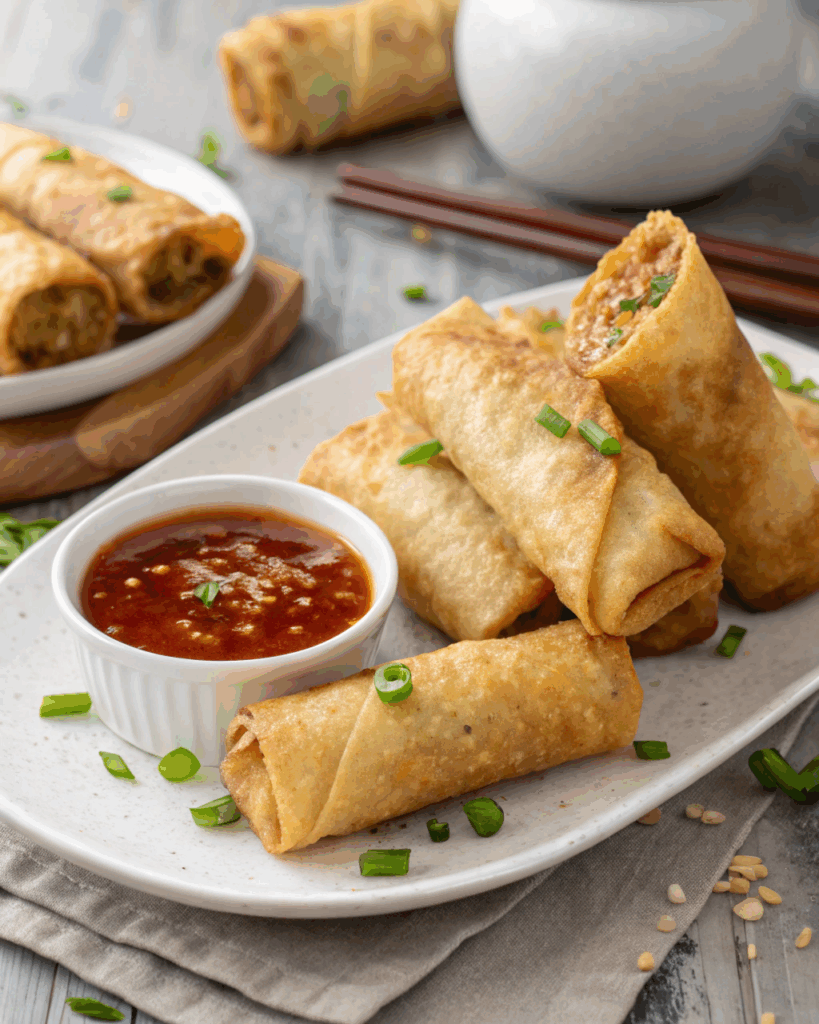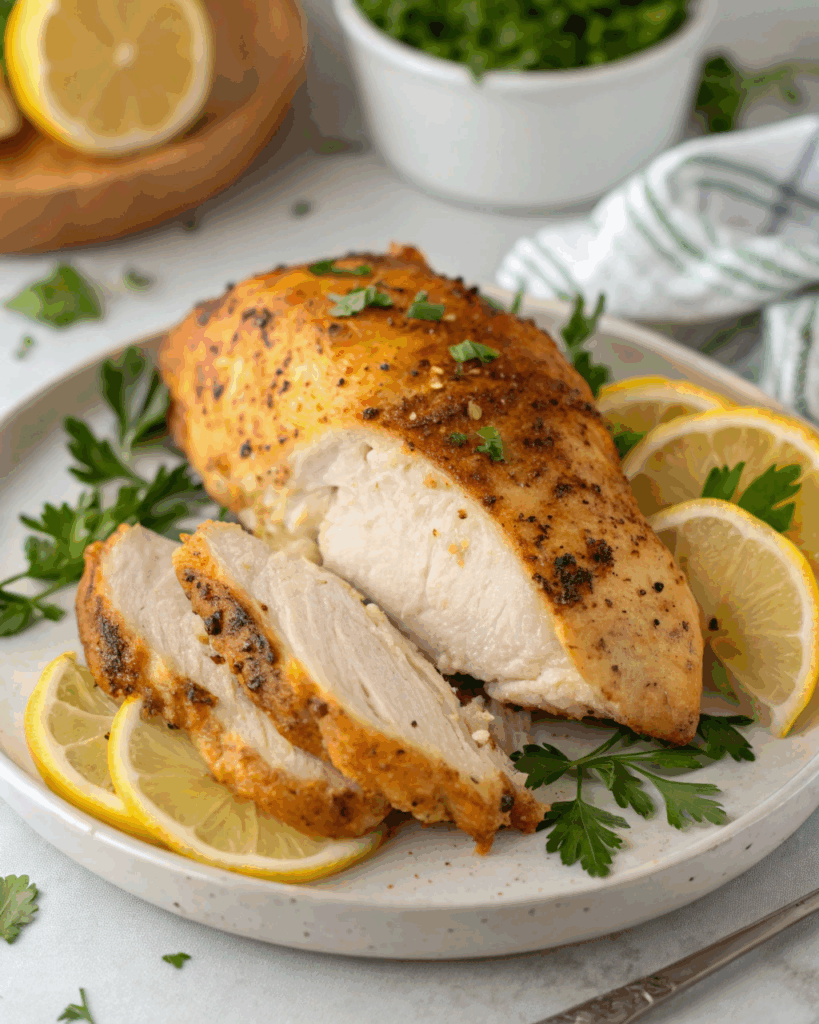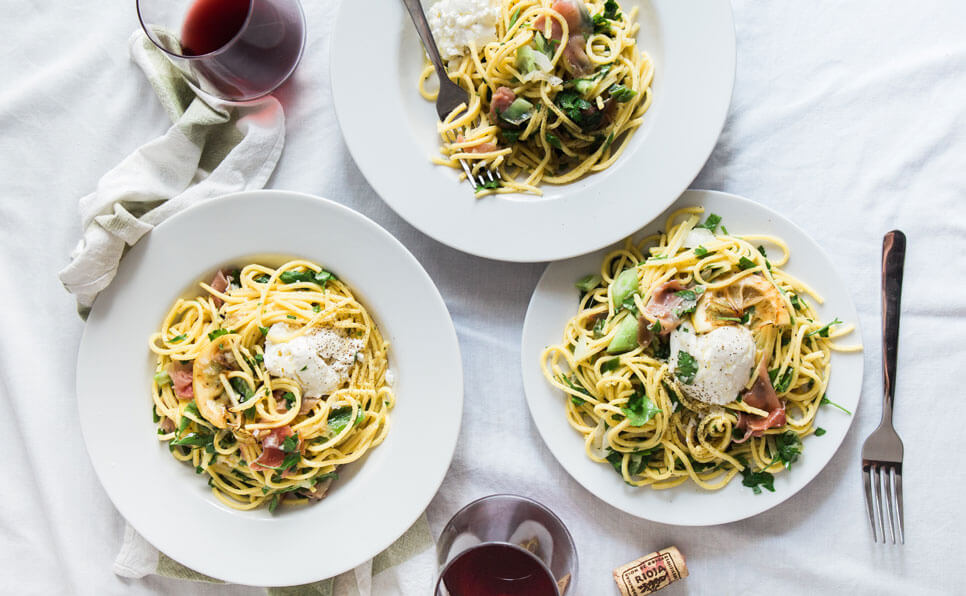Egg rolls, those delightful parcels of crispy wrapper encasing a savory filling, have long been a staple in Asian-inspired cuisine, particularly in American Chinese restaurants. But what exactly are egg rolls, and how did they evolve into the beloved appetizer we know today? To understand this, we must delve into their fascinating history.
The origins of egg rolls are somewhat shrouded in mystery, with debates among food historians about their true birthplace. Some sources trace egg roll-like foods back to ancient China, where similar wrapped delicacies, such as spring rolls, were consumed during festivals and daily meals. These early versions were likely made with thin wheat or rice wrappers filled with vegetables, meats, and seasonings, then either fried or steamed. The term “egg roll” itself may stem from a 1917 Chinese American cookbook that described a dish where vegetables and meat were wrapped in an egg-based batter and sliced, giving it an eggy connotation despite modern versions often lacking eggs in the filling. However, the egg roll as we recognize it today—thicker, bubblier wrapper, deep-fried to golden perfection—is largely an American invention. It’s believed to have emerged in New York City’s Chinatown in the 1930s, adapted by Chinese immigrants to suit American palates. Restaurateurs like Henry Low of the Port Arthur Restaurant are credited with popularizing the dish, blending Chinese techniques with local ingredients to create a heartier, more substantial appetizer. Unlike the lighter spring rolls from mainland China, which use thinner rice paper and are often not fried, American egg rolls feature a wheat-based wrapper that puffs up during cooking, providing that signature crunch.
Fast forward to the modern era, and egg rolls have transcended their restaurant roots to become a homemade favorite. But traditional deep-frying poses challenges: it’s messy, requires large amounts of oil, and can make the dish less healthy due to high fat content. Enter the air fryer—a game-changing kitchen appliance that revolutionizes how we prepare these crispy treats. Air frying uses hot air circulation to mimic the effects of deep frying, resulting in egg rolls that are just as crunchy on the outside and juicy on the inside, but with significantly less oil. This method cuts calories by 70% to 80% compared to traditional frying, reducing fat intake while preserving flavor and texture. Health benefits abound: air frying lowers the risk of acrylamide formation (a potential carcinogen in fried foods), aids in weight management by reducing overall calorie consumption, and retains more nutrients in ingredients since it doesn’t submerge them in hot oil. Moreover, air fryers are convenient—they heat up quickly, cook food evenly, and require minimal cleanup, making them ideal for busy home cooks.
In this comprehensive guide, we’ll explore everything you need to know about making air fryer egg rolls. From selecting the perfect ingredients to mastering the wrapping technique, we’ll cover the essentials for creating this crispy Asian appetizer at home. Whether you’re a novice in the kitchen or a seasoned chef, air fryer egg rolls offer a healthier twist on a classic without sacrificing taste. We’ll also discuss variations to keep things exciting, nutritional insights to inform your choices, and pairing suggestions to elevate your meal. By the end, you’ll be equipped to whip up batches that rival your favorite takeout spot. Let’s roll into the details!
Ingredients for Air Fryer Egg Rolls – Crispy Asian Appetizer
Crafting the perfect air fryer egg roll starts with quality ingredients. The beauty of this recipe lies in its flexibility—traditional fillings often include a mix of vegetables and protein, but you can customize based on dietary preferences or what’s in your pantry. Below, I’ll outline a classic pork-based version, drawing from popular recipes, along with explanations, substitutions, and tips for sourcing.
Core Ingredients List (Makes about 12-15 egg rolls)
- Egg Roll Wrappers (12-15 sheets): These are the foundation. Typically made from wheat flour, water, and sometimes egg, they come in square sheets available in the refrigerated section of most grocery stores or Asian markets. Look for brands like Nasoya or Twin Dragon for reliable quality. Avoid wonton wrappers, as they’re thinner and won’t hold up as well in the air fryer.
- Ground Pork (1/2 lb or 225g): Provides a savory, juicy base. Opt for lean ground pork to keep things healthier, but a bit of fat enhances flavor. Substitutes: Ground chicken, turkey, beef, or even shrimp for a seafood twist. For vegetarian options, use crumbled tofu, tempeh, or mushrooms.
- Coleslaw Mix or Shredded Cabbage (4 cups): Cabbage adds crunch and bulk. Pre-shredded coleslaw mix (cabbage and carrots) saves time. Fresh green or Napa cabbage works best; shred it finely to ensure even cooking.
- Matchstick-Cut Carrots (1/2 cup): For sweetness and color. If using coleslaw mix, this might already be included. Grate your own if fresh is preferred.
- Scallions/Green Onions (3-4, chopped): Adds a sharp, fresh bite. Use both white and green parts for maximum flavor.
- Garlic (2-3 cloves, minced): Essential for aromatic depth. Fresh is best, but garlic powder (1 tsp) can substitute in a pinch.
- Ginger (1 tsp, freshly grated): Brings warmth and zing. Ground ginger (1/2 tsp) is an alternative, though fresh is more potent.
- Soy Sauce (2-3 tbsp): For umami and saltiness. Low-sodium versions help control sodium levels. Tamari for gluten-free.
- Sesame Oil (1 tbsp): Imparts a nutty Asian essence. A little goes a long way; toasted sesame oil is ideal.
- Hoisin Sauce (1-2 tbsp, optional): Adds sweetness and thickness to the filling. Oyster sauce or a mix of honey and soy can replace it.
- Vegetable Oil or Cooking Spray: For brushing the egg rolls before air frying. This ensures crispiness without deep frying.
- Optional Add-Ins: Bean sprouts for extra crunch, water chestnuts for texture, or bamboo shoots for authenticity. For spice, add sriracha or red pepper flakes.
Why These Ingredients Work
Each component plays a role in balancing flavors and textures. The protein provides heartiness, vegetables offer freshness and fiber, and seasonings tie everything together with that irresistible Asian flair. Nutritionally, this mix is balanced: cabbage and carrots are rich in vitamins A and C, while pork supplies protein and B vitamins. A single egg roll typically clocks in at around 222 calories, with 7.37g protein, 10.6g fat, 24.3g carbs, and 2.3g fiber. Sodium can be high at 417mg per roll due to soy sauce, so use low-sodium options if watching intake.
Substitutions and Dietary Adaptations
- Vegetarian/Vegan: Swap pork for plant-based meat alternatives like Beyond Meat or extra veggies. Ensure wrappers are egg-free.
- Gluten-Free: Use rice paper wrappers (though they’ll be more like spring rolls) or gluten-free egg roll wrappers if available. Substitute tamari for soy sauce.
- Low-Carb/Keto: Replace traditional wrappers with low-carb alternatives like cheese wraps or lettuce leaves, though crispiness may vary.
- Allergen-Friendly: Nut-free by omitting sesame oil; use avocado oil instead.
Sourcing tips: Asian markets often have the freshest wrappers and authentic seasonings. For organic or specialty items, check online retailers like Amazon. Prep ahead by chopping veggies a day in advance to streamline assembly.
With these ingredients, you’re set to create egg rolls that are not only delicious but adaptable to any diet. Next, we’ll dive into the step-by-step preparation.
(Word count so far: approximately 1,200)
Air Fryer Egg Rolls – Crispy Asian Appetizer: Step-by-Step Recipe
Now that we have our ingredients, let’s assemble and cook these crispy delights. This recipe yields 12-15 egg rolls, perfect for 4-6 servings as an appetizer. Total time: about 45 minutes (20 prep, 25 cook).
Step 1: Prepare the Filling
Heat 1 tbsp sesame oil in a large skillet over medium heat. Add the ground pork and cook until browned, about 5-7 minutes, breaking it up with a spoon. Drain excess fat if needed. Stir in minced garlic, grated ginger, and chopped scallions; sauté for 1-2 minutes until fragrant. Add the coleslaw mix and carrots, cooking until vegetables soften but retain some crunch, about 4-5 minutes. Pour in soy sauce and hoisin, stirring to combine. Taste and adjust seasonings—add pepper or sriracha for heat. Remove from heat and let cool slightly. This step ensures flavors meld without overcooking veggies.
Step 2: Wrap the Egg Rolls
Lay an egg roll wrapper on a clean surface, diamond-shaped with a corner facing you. Place 2-3 tbsp of filling near the bottom corner. Fold the bottom over the filling, tuck in the sides, and roll tightly upward. Seal the top corner with a dab of water or beaten egg. Repeat with remaining wrappers. Pro tip: Keep wrappers covered with a damp towel to prevent drying. If wrappers tear, patch with another piece.
Step 3: Air Fry to Perfection
Preheat your air fryer to 350-380°F (175-195°C), depending on the model. Lightly brush or spray the egg rolls with oil. Arrange in a single layer in the basket (work in batches if needed). Cook for 6-8 minutes, flip, spray again if dry, and cook another 5-7 minutes until golden and crispy. Internal temperature should reach 165°F for safety. Let rest 2 minutes before serving to avoid burns from hot filling.
Common Mistakes to Avoid
Overfilling leads to bursts; underfilling results in airy rolls. Don’t overcrowd the basket—air circulation is key for even crispiness. If rolls aren’t crispy enough, increase temperature slightly or add a second oil brush midway.
Variations to Spice Things Up
Egg rolls are versatile! Try these twists:
- Southwest Egg Rolls: Fill with chicken, black beans, corn, cheese, and spices. Serve with avocado dip.
- Cheeseburger Egg Rolls: Ground beef, cheddar, pickles, and onions for a fusion favorite.
- Vegetarian: Mushrooms, tofu, and extra veggies for a meat-free option.
- Dessert Egg Rolls: Banana and Nutella or apple pie filling for a sweet end.
- Buffalo Chicken: Shredded chicken in buffalo sauce with blue cheese.
These variations keep the recipe fresh, drawing from creative adaptations like reuben or pizza-inspired rolls.
(Word count so far: approximately 2,000)
Tips and Tricks for Perfect Air Fryer Egg Rolls
Achieving restaurant-quality results at home requires finesse. Here are expert tips:
- Wrapper Handling: Thaw frozen wrappers in the fridge overnight. Work quickly to avoid cracking.
- Filling Moisture: Squeeze excess liquid from veggies to prevent soggy rolls.
- Oil Application: Use a neutral oil like canola for brushing; it has a high smoke point.
- Freezing: Assemble and freeze uncooked rolls for up to 3 months. Air fry from frozen, adding 1-2 minutes.
- Air Fryer Models: Basket-style works best; adjust times for oven-style.
- Dipping Sauces: Sweet chili, duck sauce, or mustard enhance flavors.
Troubleshooting: If rolls split, use less filling next time. For uneven cooking, rotate midway.
Nutritionally, air frying makes these a smarter choice. A standard egg roll has 223 calories, but air-fried versions can shave off 50-100 calories by using minimal oil. They’re a good source of protein (about 7g per roll) and fiber from veggies, but watch sodium—opt for low-salt ingredients to keep under 400mg per serving. Compared to deep-fried, air-fried egg rolls reduce trans fats and promote better heart health.
(Word count so far: approximately 2,500)
What to Serve with Air Fryer Egg Rolls – Crispy Asian Appetizer
Egg rolls shine as appetizers but pair wonderfully with sides to create a full meal. Aim for balance: contrast crunch with soft textures, savory with sweet or tangy.
Classic Asian-Inspired Sides
- Fried Rice or Chow Mein: Stir-fried rice with veggies and eggs complements the rolls’ flavors. Add shrimp or chicken for protein.
- Hot and Sour Soup: A tangy, spicy broth starter that warms the palate.
- Crab Rangoon: Cheesy, creamy wontons for a indulgent duo.
Vegetable Sides
- Roasted Bok Choy or Garlic Green Beans: Simple, healthy greens with garlic and soy.
- Asian Coleslaw: Crunchy cabbage salad with sesame dressing for refreshment.
- Cucumber Yogurt Salad: Cooling contrast to the hot rolls.
Protein Pairings
- Stir-Fried Meats: Beef and broccoli or kung pao chicken for a hearty main.
- Seafood: Steamed fish or shrimp to keep things light.
Other Ideas
- Noodles: Soba or ramen for slurp-worthy sides.
- Dips and Sauces: Sweet and sour, plum sauce, or sriracha mayo.
- For a Feast: Pair with scallion pancakes or egg drop soup.
Non-Asian twists: Mashed potatoes or sauerkraut for fusion fun. Beverages: Green tea, beer, or white wine to cleanse the palate.
These pairings turn egg rolls into a versatile meal centerpiece.
Nutritional Information and Health Considerations
Understanding the nutrition of air fryer egg rolls helps make informed choices. Per roll (based on pork version):
- Calories: 200-250 (lower than deep-fried’s 300+)
- Protein: 7-10g
- Fat: 8-12g (mostly from pork and minimal oil)
- Carbs: 20-25g
- Fiber: 2-3g
- Sodium: 300-500mg
Benefits: High in veggies for antioxidants; air frying reduces fat by up to 80%. Drawbacks: Still processed if using store-bought wrappers; potential allergens like gluten or soy.
For healthier tweaks: Use whole-grain wrappers, lean proteins, and bake instead of fry if needed. Portion control is key—2-3 rolls per serving.
FAQs
Q: Can I bake instead of air fry? A: Yes, at 400°F for 15-20 minutes, flipping halfway.
Q: How to store leftovers? A: Refrigerate up to 3 days; reheat in air fryer for crispiness.
Q: Are egg rolls gluten-free? A: Not typically, but substitutions exist.
Q: Why do my rolls not crisp? A: Ensure oil coating and proper temperature.
Conclusion
Air fryer egg rolls embody the perfect fusion of tradition and innovation—crispy, flavorful, and healthier than ever. From their ancient Chinese roots to modern American adaptations, they’ve captured hearts worldwide. With this guide, you can recreate them at home, experimenting with fillings and sides for endless enjoyment. Whether hosting a party or craving takeout vibes, these appetizers deliver. Grab your air fryer and start rolling—your taste buds will thank you!



